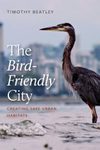![Eco-architecture II Eco-architecture II]()
Click to have a closer look
About this book
Contents
Customer reviews
Related titles
About this book
The development of Eco-Architecture is driven by the depletion of natural resources, especially fossil fuels and the need to preserve the balance of nature. Eco-Architecture makes every effort to minimize the use of energy at each stage of a building's life cycle, including the extraction and transportation of materials; their fabrication; their assembly into the building; and ultimately the ease and value of their recycling when the building's life is over. The design may also take into consideration the use of energy in building maintenance and changes in its use, not to mention its lighting, heating and cooling, particularly where the energy consumed involves the emission of greenhouse gases.
Eco-Architecture II: Harmonisation Between Architecture and Nature contains papers presented at the Second International Conference on Harmonisation between Architecture and Nature, held in The Algarve, Portugal. The multi-disciplinary nature of Eco-Architecture is reflected in the contents, which includes topics on: historical and philosophical aspects; ecological and cultural sensitivity; energy and building technologies; alternative and renewable sources of energy; design with nature; design with climate, siting and orientation; materials selection and their life cycle assessment of materials; design by passive systems; conservation and re-use of water; building operation and management; rehabilitation and adaptive re-use; and case studies.
Contents
Learning from vernacular architecture: sustainability and cultural conformity
B. A. Kazimee;
The ecology of the
G. Broadbent;
The vernacular of Tibet, harnessing panoramic sunshine
N. Blossom; L. Blossom;
The fortress, a house with a vision
B. D’hoore; P. Quataert;
Modern interpretation of FengShui in contemporary sustainable residential design
Z. Zhong; B. Ceranic;
Roots and relationships of greening buildings
S. Fruehwirth;
Light Imprint New Urbanism – a framework for urban and environmental sustainability
T. E. Low; G. Tachiev; P. Kelly; G. Pearlman; N. Black; M. Carney; L. Koutrelakos;
Abianeh Village – “of the same color as nature”
M. M. G. Soroush;
Water as a natural and an artistic resource
M. G. Bachmann;
Assessing housing: developing a method for neighbourhood ecological footprint analysis
R. E. Smith; M. Senbel;
The of composition: architecture and eco-sustainability
A. Sichenze; I. Macaione; M. I. Insetti;
Swarm-driven idea models – from insect nests to modern architecture
S. von Mammen; C. Jacob;
Defining ecological regionalism – a theoretical perspective
M. A. Yadav;
In harmony with nature – the Suckling Elephant House of Malaysia
A. Bahauddin; A. Abdullah;
Living skins: environmental benefits of green envelopes in the city context
D. Roehr; J. Laurenz;
Earthquake resistant characteristics of traditional Khasi houses in Shillong, India
B. I. O. Dahunsi; A. K. Mittal;
Hands-on learning: the ecoMOD project
J. D. Quale;
Urban energy harvest and optimisation in use of renewable energy sources in the Droevendaal residential area
G. V. Tragopoulos; W. Timmermans; R. Rovers;
Cost benefit analysis of energy efficient family houses
H. Krstić; K. Čulo;
Timber: a changing material and its effect on the architectural form
S. Costa Santos;
Following nature, completing the cycle, properly utilizing our precious water – exploration of future urban water systems
Y. Feng; R. Otterpohl; K. Wichmann; U. Braun;
Specifying textiles in a greener world: using sustainable strategies to develop new criteria
J. Stark;
Sustainable procedures for environmental evaluation of building materials and technologies
M. C. Forlani; M. M. Lepore; A. Basti;
Hygrothermic performance of the exterior and interior surfaces of buildings
H. Stopp; P. Strangfeld;
Visualizing sustainability in urban conditions
T. Shelton;
Study of the behaviour of the shutter prototype for non-residential buildings, aimed at containing the summer heating load
S. Grignaffini; S. Cappellanti; A. Cefalo;
Use of active and passive solar systems in residential buildings
S. A. R. Shojaee;
Generation p(ost-fossil)
A. Ellett; M. Despang;
The solar house in 1947
A. Denzer;
Daylight availability in courtyards of urban dwellings in Athens
E. Tsianaka;
The Emperor’s new clothes: living skins and the reconsideration of the post-war office tower
S. Holmes; J. Maze; M. McGlothlin;
Rehabilitation and adaptive reuse of historic buildings in Poland
E. D. Ryńska;
Rehabilitating existing high-rise residential buildings: the idea of
E. Kalisch Rotem;
Customer Reviews





























